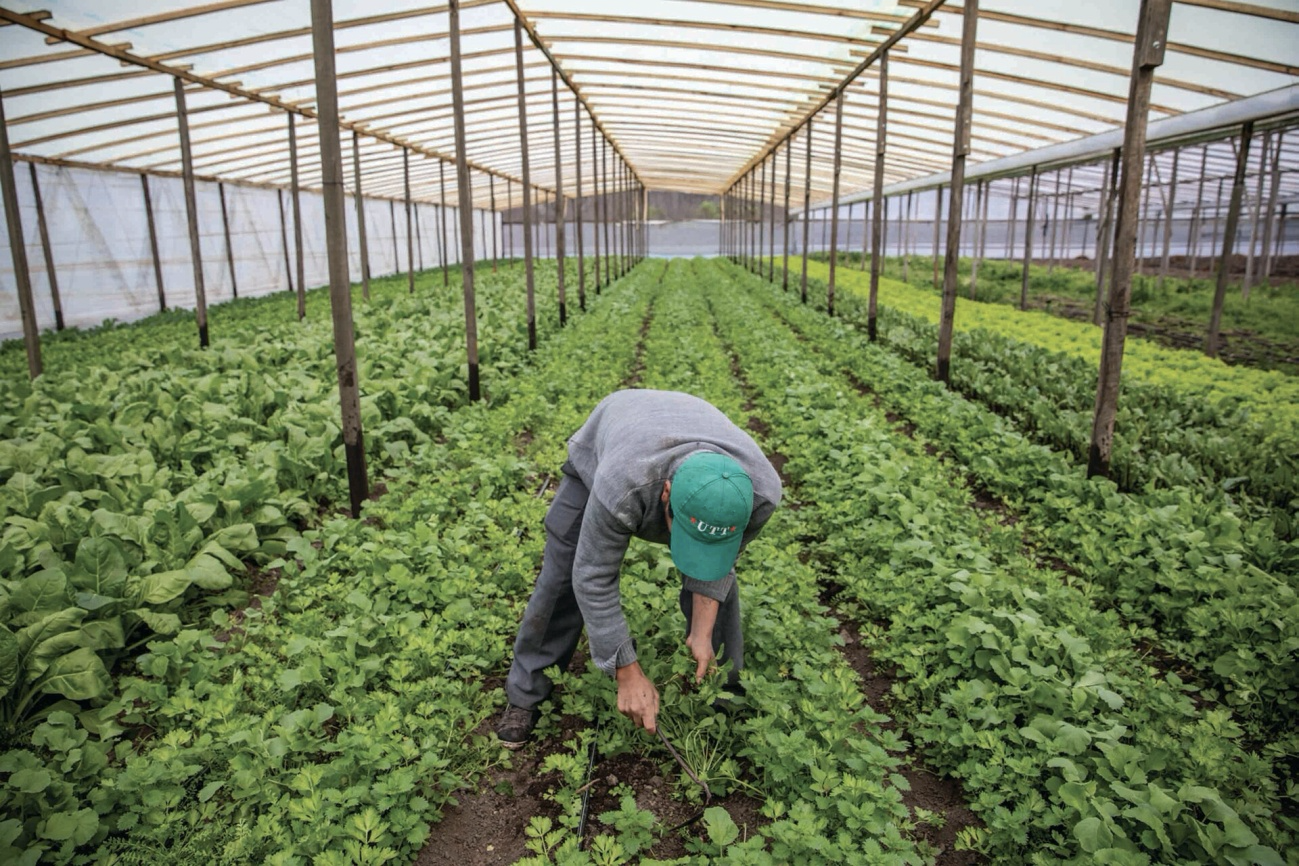How can we move beyond this conversation stopper?
Working and living on protected farmland

To be economically viable farmers need to be able to live close to the land and without additional housing costs. This concern is at the heart of the project Integral Agricultural Colony of Urban Supply (CAIAU) initiated in 2014 by the Unión de Trabajadores de la Tierra (UTT) after mobilisation by small producers. Each family has its house, works approximately 1 hectare of land and sells the produce in local markets (agroecological and non) and also organises box schemes for the inhabitants. The initiative of UTT also led the National Institute of Agricultural Technologies to work more seriously in family farming and agroecology. This argentinian initiative acknowledges the need to perceive agricultural land as part and parcel of a peopled landscape, in which the right to live on the land is part and parcel of a relationship of stewardship and not of land consumption.
See Las Colonias Agroecológicas (UTT) (Spanish)
Proximity matters and comes at a price

Thünen, Johann Heinrich von, Der isolierte Staat in Beziehung auf Landwirtschaft und Nationalökonomie (Rostock, 1842)
In the early nineteenth century, a German economist, Johann Heinrich von Thünen, studied how agricultural production organises around an isolated city. His model "the Isolated State" gives a mathematical explanation for the typical differentiation in land use he observed around German provincial cities based on the economical trade off between the prices within an urban consumer market, cost of land, the cost of transport and the cost of labour. He describes four rings around the city, with the first ring supplying dairy, fruit and vegetables (because perishable), the second ring timber production (because heavy), the third ring bulk crops such as grain (better storable and transportable), the fourth ring livestock farming (self-transporting), and beyond wilderness. Much has changed since Von Thünen's time. Nevertheless horticultural activities remain dominant in a peri-urban environment until today, not so much because there are no alternatives to getting fresh vegetables into the city, but because horticultural activities generate high yields in a small area, and are thus more able than arable farming and livestock farming to cope with high real estate prices and pressure on peri-urban land. From a 21st century perspective the “Isolated State” reveals the logics of substitution at play in a contemporary urban land market, where it has become possible to trade agricultural land use for urban activities that correspond with a higher land value. One of the main causes for this structural substitution is the relatively low cost of transport of (even fresh) food over long distances and the replacement of local land and labour for the extraction of resources and the exploitation of labour elsewhere. While these logics of substitution seem to make room for housing and amenities, and enable urban development, they are at the heart of a way of urbanisation that seems to accept the steady loss of land and farmers which are essential to the organisation of an equitable and sustainable urban society.Can we imagine the strategies and type of projects to revert these logics of substitution?
Agroecologically articulated water policy

As part of the development of its urban food policy, Paris set out a clear ambition for the management of its drinking water catchment areas: develop organic farming areas in water catchment areas and in that way increase the overall supply of local organic food. The public company in charge of the city’s drinking water distribution System, Eau de Paris, is promoting and supporting the preservation and development of organic agriculture. In addition to offering technical support, tools and advice for existing farmers to convert to organic agriculture, the city also developed an active land policy to make land available to organic farmers through an ecological lease (“bail rural environnemental”).
The city is examining legal possibilities for supplying Parisian collective catering with produce from catchment areas, and is also working on a label to promote the origin of products from catchment areas.
Territorial coordination of municipal public policy

In the city of Rosario, the municipal government agencies are working on a green belt policy (Cinturón Verde) within the development of current agroecological policies. The Cinturón Verde is conceived as the coordination of the efforts to promote and facilitate the transition towards agroecological production by combining multiple aspects of public policy on the largest portion(s) of farmland within the municipal boundary. The greenbelt policy is aimed at achieving favorable living and working conditions to produce agroecological food, protecting farmland from gradual conversion for other uses such as residential and industrial. The Peri-Urban Green Belt Program combines the implementation of different municipal ordinances (i.e. the prohibition of glyphosate throughout the city and of agrochemicals in the first 100 meters of the urban limit, the protection of food-growing lands (800 hectares), the obligation to incorporate food-related industries within the areas of integration with industrial zones), and active collaboration with farmers reconverting back to agroecological farming. This collaboration includes accompaniment for the remediation of upper soils, the introduction of alternative water and energy technologies, the offering of training and expert advice on agroecological cultivation and marketing. The green belt policy shows that a municipal authority can go a long way by using multiple policy instruments in a territorially coordinated manner, linking up with other organizations, institutions and neighboring municipalities.